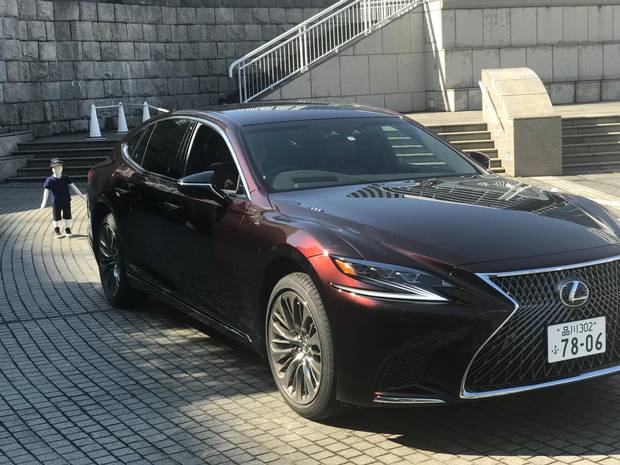Lexus is proud that its big 2018 LS sedan includes some new semi-autonomous driving assistance for greater safety, but the system must still catch up to other companies', including Mercedes-Benz and Tesla.
The LS takes the various technologies found on the Toyota Safety Sense P system, which include lane-guiding assistance and rear cross-traffic alert, and adds its own lane-trace assist (LTA) and lane-change assist (LCA).
The first uses a camera and radar to safely follow the vehicle in front in addition to monitoring the lane's painted markings, similar to Mercedes's Distronic Plus system, and the second lets the car change lanes automatically with a gentle tap of the indicator stalk, such as on a Tesla Model S.
I drove a new LS on a busy Yokohama highway to see how the car was improved, but the experience was nothing to write home about. I'll tell you anyway.
I followed a pace car at 60 kilometres an hour and pressed a button to engage the lane-trace system. The car started steering itself by adjusting the steering, not applying individual brakes as with some systems.

Drive contributor Mark Richardson deploying the autonomous technology in a Lexus.
Not for long, though. As with all other production cars that follow the lane automatically, a symbol would light up between the gauges to warn me to put my hands back on the wheel. Sometimes, it would give me 30 seconds of hands-free driving, but sometimes only five seconds. One time, it even started taking me into the side wall with no advance warning and the engineer in the passenger seat lunged for the wheel to correct it.
Lane change seemed even more finicky. It won't let you change lanes if there's another vehicle in the way, but it did let me do so with another car approaching quickly from behind to overtake in the other lane. As well, if you hit the stalk too hard, it won't activate. Frankly, it hardly seemed worth the bother.
The intention behind all this is to create the safest car in the world, with no traffic fatalities – just as Volvo states is its goal for 2020 – and Lexus is certainly headed in the right direction.
Engineers and executives here were at pains to point out that Toyota Motor Corp. is a conservative company – it won't usually be the first to introduce something, because it wants to take the extra time to be sure its technology is the best. In this case, LTA is several years behind the technology of other makers, and LCA is at least a year.

The LS takes the various technologies found on the Toyota Safety Sense P system, which include lane-guiding assistance and rear cross-traffic alert, and adds its own lane-trace assist (LTA) and lane-change assist (LCA).
"Toyota doesn't make risk-happy lawyers," says Stephen Beatty, vice-president of Toyota Canada. "We will be very conservative and cautious in our approach to putting these technologies in our cars."
More useful is the car's ability to brake automatically if something – someone – is standing behind the reversing car. The new LS uses image technology in its rear-facing camera, not just the radar of its competitors, to recognize pedestrians and bicycles and hit the brakes if needed.
It's just another layer of technology in the arsenal of safety systems, many of which a driver will not even notice. Lexus may err on the side of caution in its development, but it's getting there, sure enough.
The writer was a guest of the auto maker. Content was not subject to approval.
Shopping for a new car? Check out the new Globe Drive Build and Price Tool to see the latest discounts, rebates and rates on new cars, trucks and SUVs. Click here to get your price.
